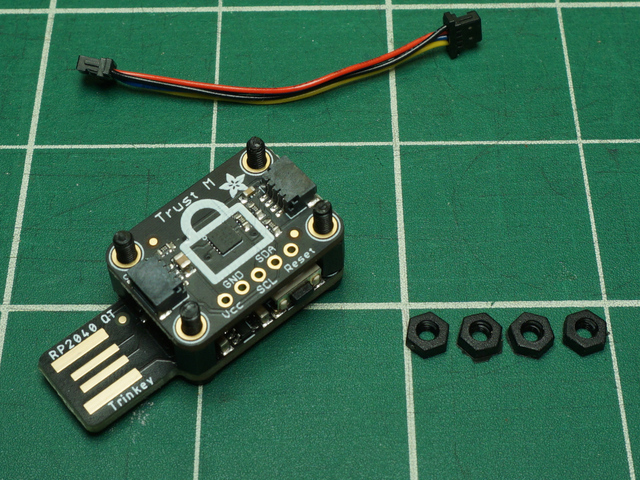Random numbers have a lot of uses in computer programming. These can be for fun things like picking a random song, drawing to a random location, etc. On the more serious side, they are useful in the realm of cryptography. For the later, security is a primary concern, so the actual randomness of the random number becomes increasingly important. This is where using a True Random Number Generator (TRNG) is very beneficial.
Don't have a TRNG? No worries. In this guide we'll show how to easily create a TRNG by coupling an Adafruit Trinkey QT2040 with an Infineon Trust M breakout. The two boards can be mounted together using M2.5 screws (kit here) or similar. Further, by connecting the boards using the STEMMA QT connector and cable - no soldering is required. Simply connect everything, load the provided code, plug into your PC's USB port, and connect to the serial port to receive all the true random goodness you may need.



































